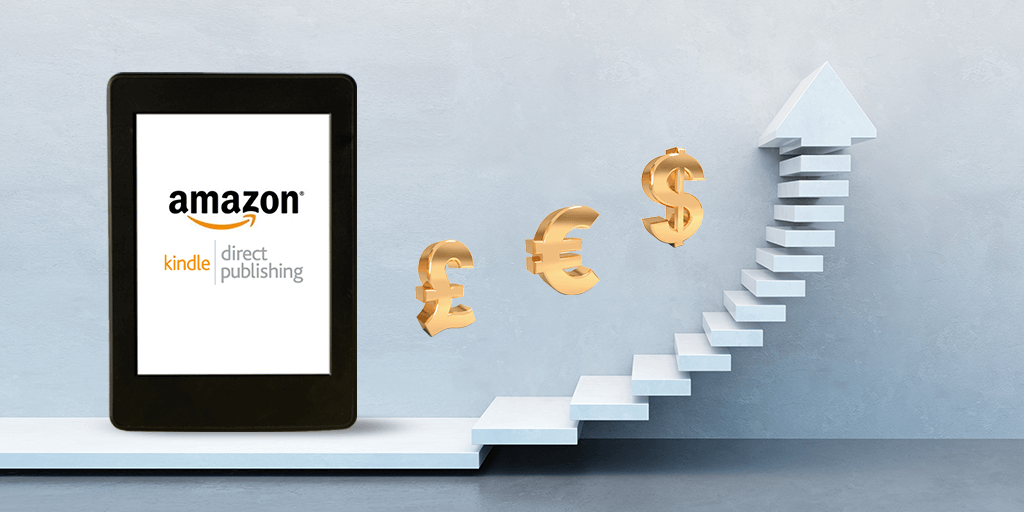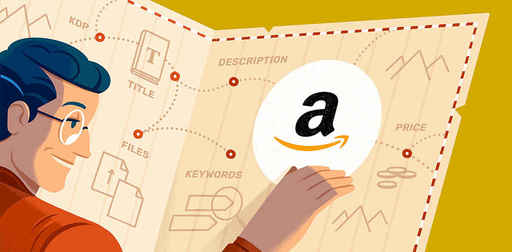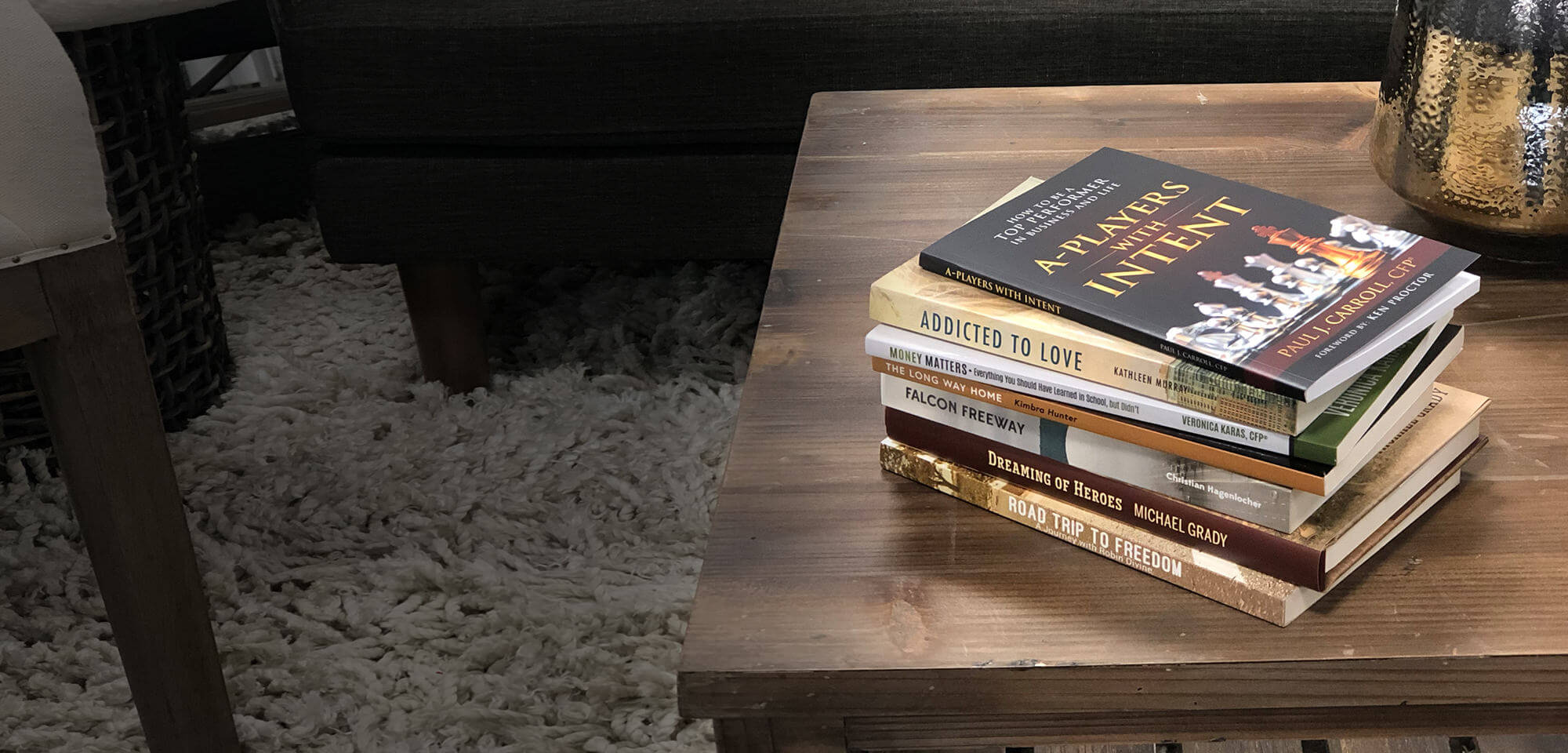Self Publishing on Amazon KDP: Everything Nonfiction Authors Need to Know

If you’re a nonfiction writer who wants the option to get your book self published as a vehicle to take your business to the next level, chances are you’ll want Amazon self publishing arm Kindle Direct Publishing (KDP) to be part of your mix.
Thrive Leads Shortcodes will not be rendered outside the content area when editing a Page with Thrive Architect
However, the Amazon self publishing platform can be quite complex for many to navigate and there are many nuances in KDP’s self publishing approach that aren’t apparent when you read their marketing materials. These nuances can, of course, cause lots of headaches if not planned for appropriately resulting in a frustrating experience.
In this post, I’ll demystify Amazon Kindle Direct Publishing for a nonfiction writer like you so that you can learn about both its advantages and its disadvantages (although, this also applies to fiction writers).
I’ll also lay out the best path forward to develop a solid distribution strategy for your book titles that’ll allow you to gain the best possible exposure on Amazon while bypassing KDP’s self publishing shortcomings (I’ll only cover the print version of your book in this article, skipping Kindle eBook self publishing including the KDP Select and Kindle Unlimited features since my goal is to focus on nonfiction writers who’ll need a stock of physical books).
How Does the Amazon Self Publishing Platform Work?
Kindle Direct Publishing is the Amazon self publishing subsidiary designed for small self publishers and self publishing authors.
KDP allows you to offer your physical book titles for sale through Amazon online bookstore properties. KDP can also make your book available to other bookstores but, as you’ll learn later on, there are several restrictions to keep in mind.
We’ll now take a deep dive into the different aspects of the Amazon self publishing platform so you can learn its benefits as well as its drawbacks.
Amazon Self Publishing Contract
Let’s get started by looking at your legal relationship to KDP: your Amazon self publishing contract.
Is Amazon Self Publishing Contract Exclusive?
Amazon self publishing has evolved over the years, adapting to the massive growth and evolution of the self publishing industry. As a result, the content of their terms and conditions can be very fluid, with ever evolving changes in different categories.
As of now they offer full non-exclusivity for printed books, which means you’re free to distribute your book through any number of channels in addition to KDP without restriction.
Do I Keep All Rights Reserved When I Self Publish Books With Amazon?
Amazon publishing allows you to retain 100% control of your rights including 100% control of your foreign rights and distribution rights plus 100% control of all your content at all times. In fact, you’ll be able to keep all rights reserved without exception. This is good news for you and it’s in keeping with current self publishing trends.
Am I Allowed to End My Amazon Self Publishing Contract?
You may terminate your Amazon self publishing contract by giving KDP five days’ notice with no questions asked. However, when they remove your content from their platform, they’ll also be removing your book titles from bestselling lists in all applicable categories plus all book reviews from people, among other things, so tread very carefully here.
Keep in mind that all book reviews on their platform are the property of Amazon, not yours, so you won’t be able to use them in the content of your marketing and book promotions without their permission.
Amazon Book Costs

One of the main benefits when using Amazon self publishing, is that your book titles will never be mass printed or held in inventory in Amazon’s regional warehouses.
Instead, every single book will be printed on demand and shipped to those people who’ve made a purchase only after full payment is received. Let’s look at how this will work for your book:
Thrive Leads Shortcodes will not be rendered outside the content area when editing a Page with Thrive Architect
How Is My Book Priced by Amazon Publishing?
When you first set up book titles on the Amazon self publishing platform, it will calculate the manufacturing cost of your book based on your trim size and the number of pages.
Based on this cost, you’ll be asked to set a list price. You’ll have to make sure that your price point is never lower than your book print cost plus your royalties.
Say your title is a 300-page black and white book distributed in the U.S. KDP’s printing cost will be $4.45 per paperback copy and your royalty will be 60% of the list price minus the book printing cost.
In this example, your minimum price point will be $4.45 / 0.60 = $7.42 (note that at this sale price your royalty payment will be zero), specifically:
(Royalty rate x list price) – print cost = (0.60 x $7.42) – $4.45 = 0
So, in order to receive a royalty payment, your book will have to be priced at a range that’s higher than $7.42. For example, if you price your book at $12.95, your royalty will be: (0.60 x $12.95) – $4.45 = $3.32. As you increase your list price, your royalty will increase in proportion thus allowing to make more money per copy.
The maximum list price Amazon publishing allows you to charge people is $250 and you have the option to set your list price in multiple currencies.
Amazon Book Purchases
If you wish to purchase books in volume for your personal use you’ll be able to buy them at cost and save quite a bit of money (although KDP doesn’t offer volume discounts below cost).
Amazon Distribution
KDP distributes printed books primarily through Amazon websites. One of the nice things about KDP is that it provides you with the option to ship books locally to customers in the U.S, Canada, Europe and Japan through their global print on demand facilities.
Now, although they have the capability to distribute books to other channels outside of Amazon, there are a lot of things that KDP doesn’t do very well in this regard, as shown below.
What Channels Does KDP Use outside of Amazon?
In addition to the Amazon properties mentioned above, KDP has a program called Expanded Distribution that can sell books directly to bookstores and libraries.
However, there are three main issues that come into play with this program.
First, it can take up to eight weeks for your nonfiction (or fiction) book on Amazon to become available for ordering.
Second, it’s currently limited to the U.S. so it’s not really suitable for nonfiction books with an international audience.
Third and most important, bookstores shy away from ordering wholesale from Amazon because they only offer stores a 25% discount off list prices, whereas the industry standard is 40%.
What Are My Amazon Publishing Paperback Royalties?
As mentioned in the book-costing example above, Amazon publishing pays you 60% royalties on book sales minus the book printing cost. Now, this royalty rate applies only to sales of printed books through Amazon.
For sales through the Expanded Distribution program the royalty rate is reduced to 40% minus the printing cost. The reason for this reduction is that KDP has to offer a wholesale discount to retailers so they can get their cut on sales.
How Often Does Amazon Pay Royalties?
KDP has a 60-day delay from book sale to payment of royalties. This delay is built in to account for book returns and the bureaucracy of the accounting process.
The payment frequency after this one time delay is 30 days, which is one of their key benefits compared to the semi-annual payments that are common with traditional publishers.
Do I Need to Supply My Own Self Publishing ISBN with Amazon?

The ISBN is your book’s fingerprint. It’s encoded in the barcode and it’s associated with the publisher, the book title and the format.
So, for example, if your book is available in paperback, hard cover and eBook formats, each will require a separate ISBN number.
Depending on what country you live in, ISBNs may have a cost for self publishing. For example, in Canada ISBNs are free, but in the U.S. a single ISBN costs $125 (there are discounts for blocks of ISBNs).
If you self publish your book on Amazon, they can provide you with the option of a free ISBN, which will save you some money if you live in the U.S. However, this comes with a big caveat: your book with be forever associated with KDP as the book’s publisher instead of you.
That isn’t worth saving $125. If you ever terminate your contract, you’ll no longer be able to keep using that ISBN. So, you should always make the investment to purchase your own ISBN. This way, your ISBN will always be associated with you as the publisher.
Book Promotion
Since Amazon operates the largest online bookstore in the world, it makes sense to promote your nonfiction book with them to achieve success in the sale of your book title. Although for privacy reasons Amazon doesn’t allow you build your own email list, the platform offers three powerful levers for promotion:
Book Reviews
One of the most important ranking factors in the Amazon online bookstore is the feedback from customer reviews. The higher the number of positive reviews you get from people, the higher your book will appear in the rankings. Reviews play a key role in the operation of the Amazon website.
For this reason, a lot of publishers have tried to game the system over the years by entering positive reviews from fake readers. So, Amazon is constantly fine-tuning their algorithm to weed out bad actors promoting bad products.
Here are three tips you’ll need to follow to stay out of trouble:
- All readers must live in different physical addresses. If several readers in the same household leave a review (as per the user’s Amazon account), all but one will be automatically deleted.
- In addition, two or more readers cannot have the same credit card on file in their Amazon account (all but one of their reviews will be automatically deleted).
- Finally, a sufficient amount of time must elapse between purchase and review to allow for actual book reading. For example, if people enter a review within minutes of purchase, it will be automatically deleted.
Do take advantage of this great promotional feature by enlisting as many different readers as possible in your target audience to purchase your book, experience it and leave a review within 30 days of the book’s release. Achieving a large number of reviews from readers early on is one of the most important things you can do to land on highly coveted Amazon bestseller lists (both nonfiction as well as fiction).
Make sure to abide by the above guidelines to get as many honest positive reviews as possible and there’s a good chance that your book will rise to the top of the search results.
Cross Marketing
Once your book tips the scales of sales through consistent positive reviews from readers (this number will depend on your book’s category), Amazon will begin to cross-promote it to millions of new readers, increasing your reach across multiple categories.
Marketing Keywords and Categories
Finally, remember that Amazon is not just an online bookstore but it’s also a search engine for products. When you set up a book in your Amazon account, KDP will request that you enter up to 7 keywords in the setup screen and up to 3 book categories or genres.
These keywords will be used by Amazon to display your book in response to people’s searches. As a result, in order to achieve success, make sure that you do some thorough keyword research to find out what someone in your target audience is most likely to search for on the Amazon website related to the subject of your book.
Thrive Leads Shortcodes will not be rendered outside the content area when editing a Page with Thrive Architect
KDP’s Limitations and Restrictions
Even though Amazon is the biggest online bookstore in the world, it does have some limitations. Let’s summarize them below:
Printed Books

Format: Amazon self publishing only supports paperback books. They don’t offer any other format categories. This is probably fine for paperback books purchased on demand through Amazon’s sites, but it’s not fine if for example you want to order hard cover books for back-of-the-room sales.
Here’s one tip: Distribute your paperback books through KDP and distribute all other categories through IngramSpark since they are equipped to produce books in multiple formats.
This way you’ll be able to add domestic and international brick-and-mortar distribution and also purchase copies of your book with volume discounts in both paperback and hard cover formats.
Title Length: KDP has a 200-character limit for your book title and a 200-character limit for your sub title. This is necessary to list your books legibly in their system.
U.S. Bookstores: As mentioned before, U.S. bookstores don’t like to order from Amazon because they’re only given a 25% discount, where other distributors offer them 40%. To work around this problem, publish through both KDP and IngramSpark.
Sales Price: Amazon doesn’t want someone to ever find a paperback copy of your book priced lower than what they charge on their site so, of course, they discourage clients from listing their books at a lower price anywhere else. Make sure that you list your paperback book with the same price in both Amazon and IngramSpark. If you sell your book on your website use this price as well.
Customer Support
At this time Amazon publishing only offers online support for self published authors. This can, of course, be inconvenient at times, because if you encounter any technical issues you’ll have to resolve them by consulting their knowledge base or by submitting a question using an online form.
File Uploads
The specifications for formatting and uploading print-ready content to the Amazon publishing platform can be quite complicated. If you are not formatting your book layout and cover professionally, there’s a good chance that KDP will reject your files a lot of times before they are accepted. Although they do provide you with detailed feedback every time, this feedback may be hard to understand for non-technically inclined people or those new to publishing.
This can be a very frustrating experience since you’ll be forced to make changes constantly and troubleshoot all issues online without being able to talk to anybody. The best tip here is to hire a professional service to do your book formatting and cover design taking care of this complicated process for you.
There you have it!
Now you have a good idea about what’s involved when you work with Amazon publishing through their subsidiary KDP to distribute and sell your paperback book. I wish you the best of success with your upcoming nonfiction (or fiction) title!
Thrive Leads Shortcodes will not be rendered outside the content area when editing a Page with Thrive Architect
If you enjoyed this article and the tips about self publishing on Amazon and are in the process of writing a nonfiction book, be sure to check out my free nonfiction success eBook, full of tips drawn from years of experience editing books for bestselling authors (including a New York Times bestseller) and ghostwriting for CEOs and politicians. Simply click here to get instant access.
Ben
Leave me a comment below if you have any questions about self publishing on Amazon or any other specific need that I can help you address – I operate an author services firm that specializes in helping entrepreneurs, professionals and business people who want to publish books as a calling card for prospects, to establish their status as an expert or to just to generate additional leads for their businesses.
Here are some related articles I highly recommend:
How to Write a Compelling Book in 12 Steps: A Must-Read Guide for Nonfiction Authors
How to Grow Your Business Writing a Nonfiction Book
 Bennett R. Coles is an award-winning author of six books published through Harper Collins (New York) and Titan Publishing Group (London). He is also the publisher at Promontory Press, editor for multiple bestselling authors (including a NY Times bestseller), ghostwriter for CEOs and politicians and the founder of Cascadia Author Services, a boutique full-service firm that specializes in premium author services specifically designed for busy professionals. Our end-to-end approach includes writer coaching, book proposal planning for publishing houses, book deal advice, ghostwriting, editing, proofing, cover design, book layout, Kindle eBook production, book promotion, social media marketing, printing and distribution.
Bennett R. Coles is an award-winning author of six books published through Harper Collins (New York) and Titan Publishing Group (London). He is also the publisher at Promontory Press, editor for multiple bestselling authors (including a NY Times bestseller), ghostwriter for CEOs and politicians and the founder of Cascadia Author Services, a boutique full-service firm that specializes in premium author services specifically designed for busy professionals. Our end-to-end approach includes writer coaching, book proposal planning for publishing houses, book deal advice, ghostwriting, editing, proofing, cover design, book layout, Kindle eBook production, book promotion, social media marketing, printing and distribution.
9 responses to “Self Publishing on Amazon KDP: Everything Nonfiction Authors Need to Know”
-

Thanks for your information. I really need to know the mechanics of how to use the software in detail. I have done one book on kindle already. Thanks!
-

Thank you for your help, I appreciate it.
God bless you and your family.
-
-

Hi!
Thank you for this article: it’s been really helpful seeing it all laid out like this, as it allowed me to make sure I wasn’t missing anything.
However, I still have a doubt no one seems to be able to lift. I’ve been using KDP with the small publishing house I work for as an alternate channel for printing and distribution: this use seems to be contemplated by KDP itself, since it allows you to list yourself as a publisher OR a self-publishing author. But is there any caveat I’m not seeing? And if not, why aren’t more people using it like this?
Thanks in advance!
-

Hi,
Thanks for one of the most succinct and understandable answers to many questions on Amazon publishing for a writer lost in all this legal stuff. I’ve just got one more question. Let’s say, as I expect (lol) Steven Spielberg reads my book and says ‘Hell, I want to make a trillion-dollar movie based on this.!’ Do I still have control over the book and can I sell the rights (or whatever its called in Thorzakian legal language) and say ‘Sure, Steve buddy, just give me a cut of 3 billion,’ or can Amazon say ‘No, no, no, its mine’ and I have all rights over it. Go away nasty Spielbergy? ‘ Similarly, what if Marvel Comics want to publish it as a graphic novel – are my feet nailed to the floor by the Amazon contract and they solely have the right to reproduce it in another form?-

As he said, you retain 100% of your rights to your content. So if you want to sign a movie contract or graphic novel contract, you are good to go. The rights of which we speak are First North American Serial Rights. Any publisher gets temporary access through the contract you sign to publish once. This is for print media. E-books are perpetually published and don’t expire.
A movie involves different rights, and you may not have any say over how your material is used, so consult a lawyer before you sign. But you will still have the right to publish your book or story for as long as you live, and your relatives will have it for 95 years after your death [see copyright.gov].
The Amazon contract merely says for any book/story you publish with them, you cannot publish the same book or story with another publisher at the same time. But if you want to publish your e-book version on Amazon and print with IngramSpark, for example, you are free to do so. Or, e-book and paperback on Amazon and hardcover on IngramSpark. I have done this, though I used Lulu for my hardcover years ago and was pleased with the result.
If you publish with a publishing house, they will handle any Amazon distribution. You are free to publish your other stories not on Kindle with other houses. You can always unpublish from Amazon to publish elsewhere. Hope this answers your question 🙂
-
-

Great article. Much needed insight!
-

Is there a size limit for a book to be published with KDP?
-

Thank you for the article. I’d like to hear comments about the backward review process at KDP. I have heard horror stories about people getting aggressively-worded notices from KDP about their account and content violations after the publication. Most writers who received the notices said the pre-publication review went fine without any red flags. It’s only a few days after publication that the army of bots tracked them down with algorithms and sent out accusatory emails threatening to shut down the account. Also, I heard that a few authors got their accounts terminated for changing the book cover more than once. I tried looking up the KDP content guidelines specifically for this but could not find it. In fact, KDP outlines instructions on how to change the cover and there’s no warning regarding the amount of times one can change the book cover.
-
[…] Photo Credits: Cascadia Author Services […]







Leave a Reply